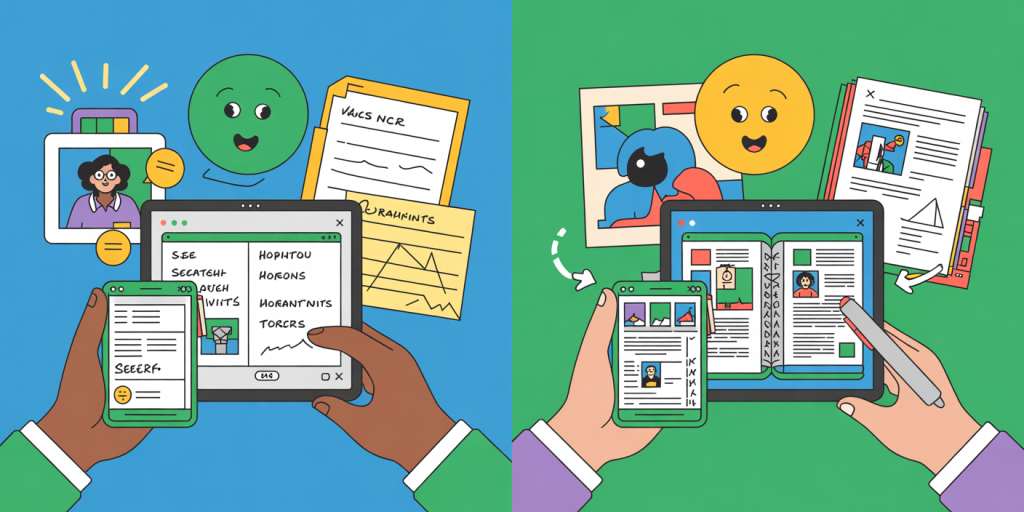Notion, Evernote, or OneNote: Best Productivity Tool in 2025?
In an increasingly digital world, productivity tools have become essential assets for professionals, students, and creatives alike. Among the vast array of options, Notion, Evernote, and OneNote have consistently stood out as leading note-taking and organizational software. As we progress into 2025, understanding which tool offers the best blend of features, usability, collaboration, and value can dramatically influence personal and team productivity. This article explores these three platforms in depth, comparing their strengths and weaknesses while supporting claims with data and practical examples.
The Evolution of Digital Productivity Tools
The rise of remote work and digital collaboration accelerated the demand for powerful productivity software. According to a 2023 report by Gartner, over 60% of knowledge workers rely on integrated digital note-taking and task management tools daily. Notion, Evernote, and OneNote have adapted to this demand in unique ways, evolving their platforms with features aimed at boosting efficiency.
Notion, launched in 2016, quickly rose in popularity thanks to its highly customizable workspace and database functionality. Evernote, a pioneer since 2008, refined note-taking with a focus on searchability and cross-device synchronization. OneNote, part of Microsoft 365 since 2003, became a staple in educational and corporate environments due to its seamless integration with other Microsoft products. In 2025, understanding these developments helps users choose a tool aligned with their specific workflows.
Feature Comparison: Customization and Usability
One of the most significant differentiators among Notion, Evernote, and OneNote is their approach to customization and user interface design. Notion emphasizes flexibility, enabling users to build pages, databases, and dashboards tailored to their projects. For example, a project manager can create a customized Kanban board in Notion that tracks tasks, deadlines, and team responsibilities within a single workspace. This versatility lends Notion an edge for users who prefer all-in-one solutions.

Evernote offers a more traditional, notebook-centric interface that simplifies note creation and retrieval. Its standout feature is the powerful search function, which can even recognize text in images and handwritten notes, a practical asset for students and researchers. Evernote’s ease of use appeals to users seeking straightforward note capture without managing complex structures.
Microsoft OneNote blends familiarity with functionality, mirroring a physical notebook with sections and pages organized within digital binders. Its integration with Microsoft 365 means users can embed Excel sheets, Outlook tasks, and Word documents directly into their notes, making it ideal for corporate users entrenched in the Microsoft ecosystem. OneNote’s freehand drawing and audio recording features also support creative tasks like brainstorming sessions.

| Feature | Notion | Evernote | OneNote |
|---|---|---|---|
| Customization | High (databases, templates) | Moderate (notebook/notecard setup) | Moderate (section/page hierarchies) |
| User Interface Complexity | Medium to High | Low to Medium | Medium |
| Search Functionality | Good (with filters) | Excellent (OCR, tags) | Good (integrated with Windows search) |
| Multimedia Support | Extensive (audio, video, embeds) | Good (images, attachments) | Extensive (drawing, audio, embedding) |
| Offline Access | Yes (with some limitations) | Yes | Yes |
Collaboration and Integration Capabilities
When productivity tools are evaluated in contemporary work environments, collaborative features and integrations often become deal-breakers. Notion excels in real-time collaboration, allowing multiple users to co-edit documents, leave comments, and view changes instantly. This makes it popular with remote teams, startups, and freelancers. For example, a marketing team at a mid-sized company might use Notion to collaboratively develop campaign strategies, share research notes, and monitor progress without switching apps.
Evernote has gradually improved its collaboration features with shared notebooks and business hubs, but it still lags behind Notion in terms of real-time editing and simultaneous user input. Nevertheless, its strength lies in being a reliable repository for shared knowledge, which suits organizations focusing more on documentation than dynamic interactions.
OneNote integrates deeply with Microsoft Teams and SharePoint, allowing users within enterprise environments to collaborate seamlessly. It supports simultaneous editing, version history, and the ability to assign and track tasks in Outlook. This integration is invaluable for large corporations where workflow often depends on interconnected Microsoft applications. For example, financial analysts at a bank use OneNote to draft reports, sync data with Excel spreadsheets, and coordinate team efforts through Teams chats.
| Aspect | Notion | Evernote | OneNote |
|---|---|---|---|
| Real-time Collaboration | Yes | Limited | Yes |
| Integration with Third-Party Apps | Extensive (Slack, Google Drive, GitHub, etc.) | Moderate (Google Drive, Outlook) | Extensive (Microsoft Office, Teams, Outlook) |
| Task Management | Built-in task boards and reminders | Basic task checklists | Integrated with Outlook tasks |
| Mobile App Collaboration | Yes | Yes | Yes |
Pricing Models and Value for Money
Understanding the cost versus benefit ratio is essential when selecting a productivity tool, especially for small businesses and freelancers managing tight budgets. Notion follows a freemium model, with unlimited blocks (content pieces) and collaboration on the free plan but imposes limits on file uploads and version history. Its paid plans start at $8 per user per month, unlocking advanced permissions, unlimited version history, and higher upload caps.
Evernote also offers a freemium tier with basic note-taking and sync on two devices. Its Premium and Business plans, priced at approximately $8 and $15 monthly, respectively, provide offline access, enhanced search, increased upload limits, and collaboration features. Evernote’s historical brand reliability and robust search justify its pricing for heavy users.
OneNote remains free for individual use with limitations and is bundled free for organizations using Microsoft 365 subscriptions starting at $6 per user per month. Its integration and functionality scale with other Microsoft tools, making it cost-effective for enterprises already invested in Microsoft’s ecosystem.
| Plan Type | Notion | Evernote | OneNote |
|---|---|---|---|
| Free Tier | Yes (limited uploads, unlimited blocks) | Yes (2 devices sync) | Yes (standalone app) |
| Paid Entry-Level Plan | $8/user/month | $8/month Premium | Included in Microsoft 365 |
| Business Plan | $15/user/month | $15/user/month | Enterprise Microsoft 365 |
| Key Value | Customizability & collaboration | Search & reliability | Integration with Microsoft 365 |
Practical Use Cases in 2025 Workflows
The choice between Notion, Evernote, and OneNote often comes down to specific workflow needs. In educational contexts, students benefit from OneNote’s ability to handle handwritten notes, equations, and audio lectures, integrated within class notebooks shared by educators. For example, a university professor might distribute lecture notes and assignments via OneNote, allowing students to annotate and collaborate on problem sets directly on the platform.
Freelancers and creative professionals often gravitate towards Notion for its project management capabilities combined with content creation. A freelance graphic designer, for instance, can maintain client briefs, track project milestones, and store inspiration boards all within one workspace. This reduces app-switching and creates coherence across activities.
Knowledge workers striving for efficient archiving and search find Evernote invaluable. Researchers managing dozens of web clippings, scanned documents, and handwritten notes rely on Evernote’s tagging and OCR capabilities to quickly retrieve information without sifting manually. The platform also supports integration with tools like Zapier, making it easier to automate workflows.

The Road Ahead: Future Perspectives for 2025 and Beyond
Looking forward, the landscape for productivity tools like Notion, Evernote, and OneNote is poised to evolve with emerging technologies such as artificial intelligence (AI), augmented reality (AR), and enhanced automation. Notion has started integrating AI-driven writing assistants to help users draft and summarize notes, setting a precedent for deeper content-generation capabilities. This aligns with increasing demand for AI-powered productivity, predicted by PwC to enhance global workforce efficiency by up to 30% by 2030.
Evernote, with its vast data repository, is investing in smarter search algorithms and better document scanning innovations to maintain its edge in information retrieval. Its recent AI pilot projects hint at features like automatic meeting minute transcription and contextual recommendations, which could redefine user experience.
OneNote’s future is closely tied to Microsoft’s broader corporate technology strategy, aiming to incorporate AI enhancements into the Microsoft 365 suite. For example, OneNote may benefit from Microsoft’s advancements in conversational AI, allowing users to interact with their notes through natural language queries or voice commands, further simplifying complex workflows.
In parallel, all three tools face competition from newer platforms emphasizing niche productivity needs or superior UI/UX design. Continuous updates, security improvements, and adaptability to hybrid work models will be critical for Notion, Evernote, and OneNote to maintain their dominant positions.
—
Choosing the best productivity tool in 2025 involves carefully evaluating individual and organizational workflows, preferred integrations, ease of use, and budget constraints. Notion, Evernote, and OneNote each excel in distinct areas, and by understanding their unique strengths, users can make informed decisions that enhance productivity and collaboration in the dynamic digital era.
